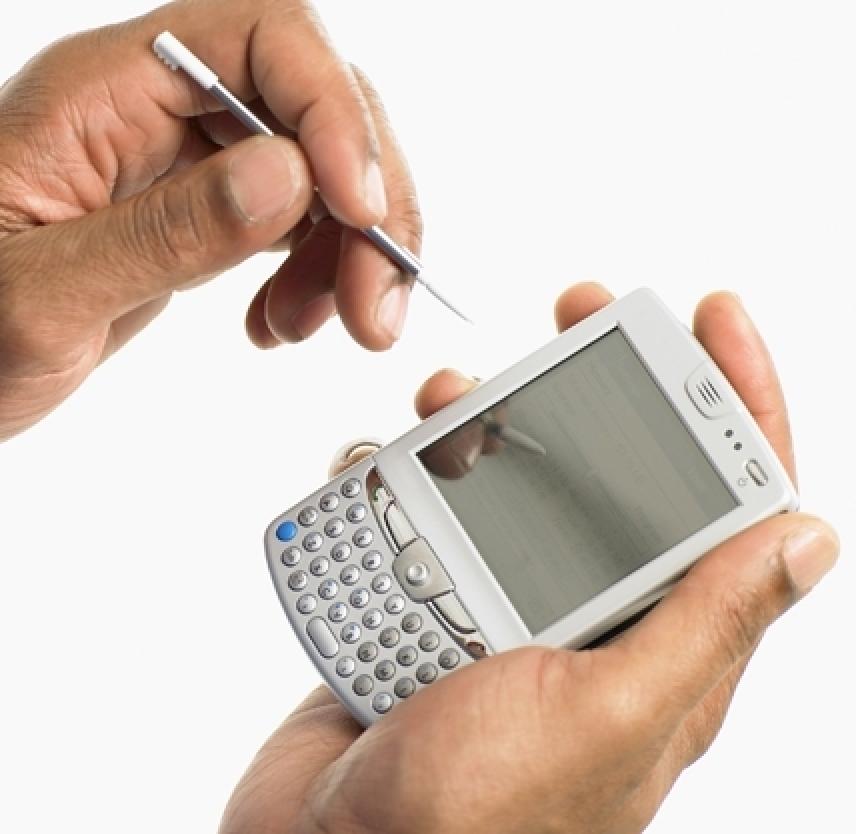
Introduction
Communicators are portable electronic devices that are intended to provide individuals who have limited or no ability to speak with the ability to take participate in direct, face-to-face, real-time conversation. These products speak when the user presses a button or touchscreen icon, types on an alphanumeric keyboard, or activates a specialized control switch designed for people with physical or neurological disabilities. Since 2001, Medicare has referred to portable electronic communicators as "speech generating devices" (SGD). [Footnote 1: According to AACFundingHelp.com, a Web site maintained by the Assistive Technology Law Center, the term SGD was coined by a Medicare policy-making body in an October 2000 policy document that was implemented in January 2001. (See "History of Medicare SGD Funding" at http://aacfundinghelp.com/funding_programs/medicare_history.html, and "SGD or AAC Device?" at http://aacfundinghelp.com/fast_facts.html#1.) Information obtained on March 7, 2008.] Other names for them include voice output communication aids (VOCA) or augmentative and alternative communication (AAC) devices.
Communication is necessary for practical purposes, and perhaps more importantly, communication is necessary for social interaction. Humans are social beings, and communication is an essential part of each person's life. We need to communicate with others in almost every aspect of our lives--at work, while shopping, at school, and at home.
Although the need to communicate is universal, many people with disabilities have additional communication needs. For example, people with severe physical or neurological disabilities may require assistance in activities of daily living and must be able to make their needs known to personal assistants or caregivers. Similarly, individuals whose disability is the result of a medical condition such as stroke need to communicate frequently to share information on their condition with medical professionals.
Portable communicators can benefit individuals with a wide variety of disabilities or conditions that impair that person's ability to speak, including:
- ALS (amyotrophic lateral sclerosis or Lou Gehrig's disease)
- Aphasia (inability to speak following brain injury or stroke)
- Autism
- Brain injury
- Dysarthria (difficulty in articulation, common among individuals with brain injury, CP, or MS)
- Laryngectomy (surgical removal of the larynx or vocal cords)
- Multiple sclerosis (MS)
- Muscular dystrophy
- Quadriplegia or high level spinal cord injury (SCI)
- Severe cognitive disabilities
- Stroke.
This fact sheet describes the different types of portable electronic communicators, including single message communicators, direct selection communicators, keyboard communicators and scanning communicators, as well as the features that are available. It discusses how communicators can be useful for individuals with specific disabilities and presents considerations in choosing a communicator. This fact sheet provides contact information for manufacturers and distributors; a bibliography; and, finally, a list of organizations and Internet resources that can provide additional information on communicators and communication disabilities.
See entire fact sheet plus photographs and illustrations.
This Fact Sheet is provided by AbleData, an assistive technology information service provided by the U.S. Department of Education’s National Institute on Disability and Rehabilitation Research (NIDRR). Neither the Department nor ICF Macro, which operates AbleData, has examined, reviewed, or tested any product, device, or resource contained in AbleData or referred to in this Fact Sheet. The Department and ICF Macro make no endorsement, representation, or warranty express or implied as to any product, device, or other information set forth in AbleData. The views expressed herein do not necessarily represent the opinions of the Department, NIDRR, or ICF Macro. For the original full text of this Fact Sheet, please go to the “”Library” section of www.abledata.com.
